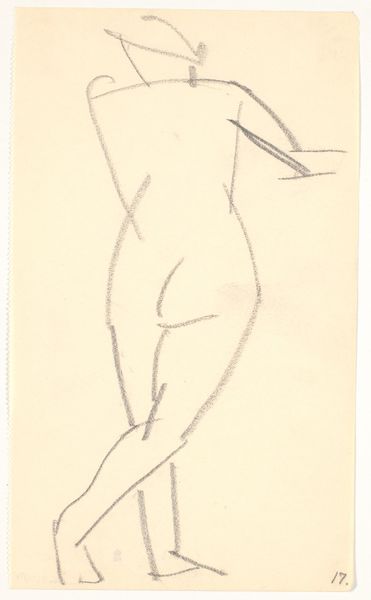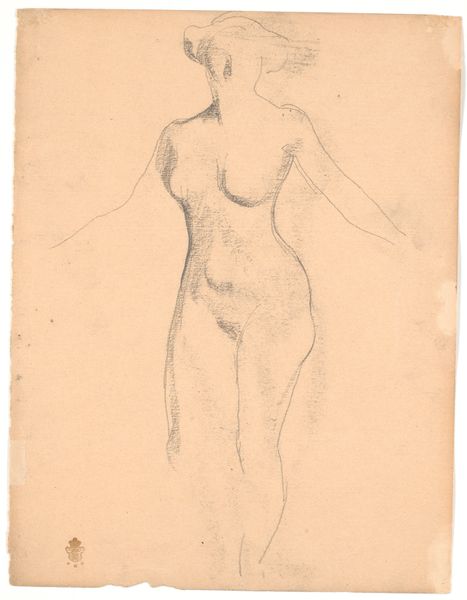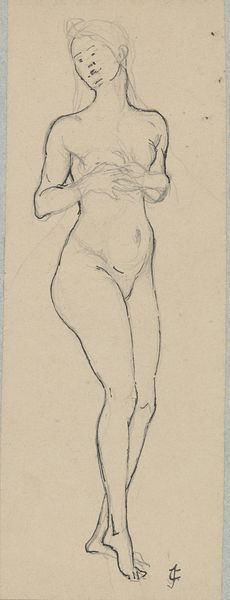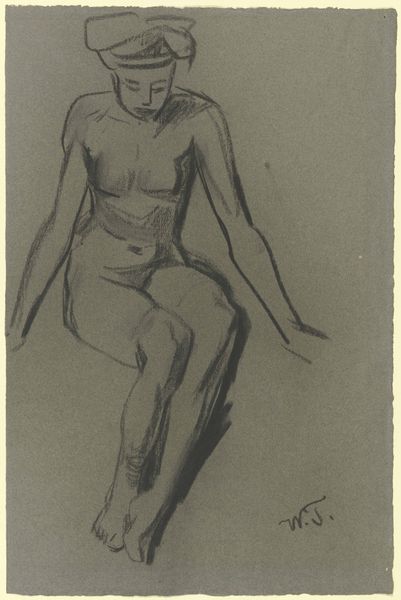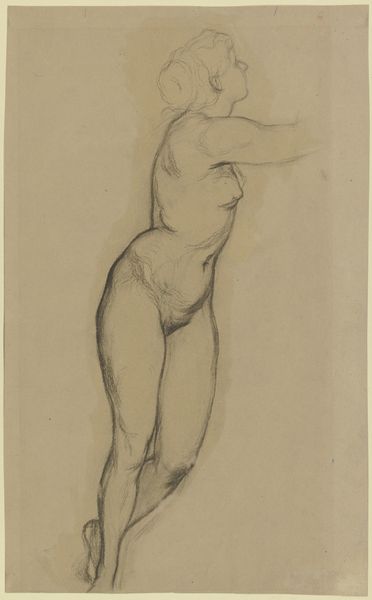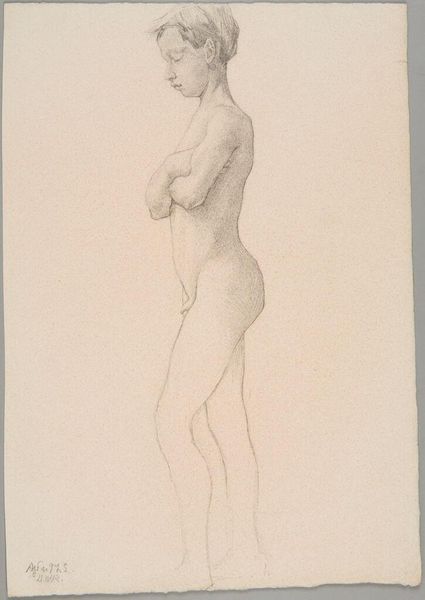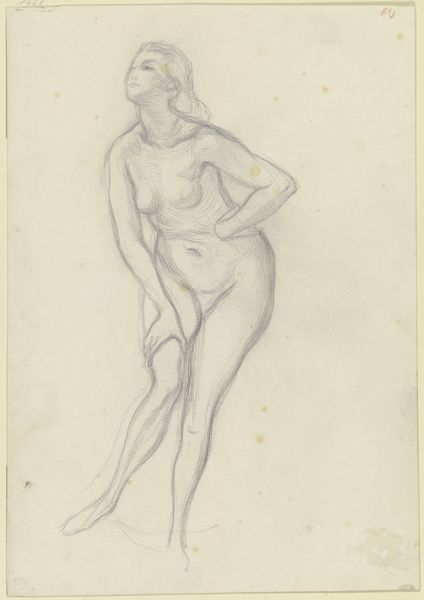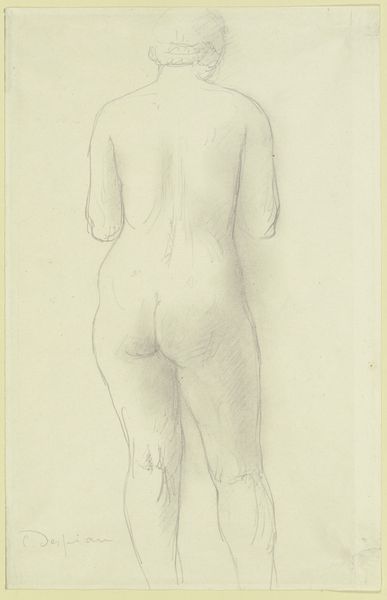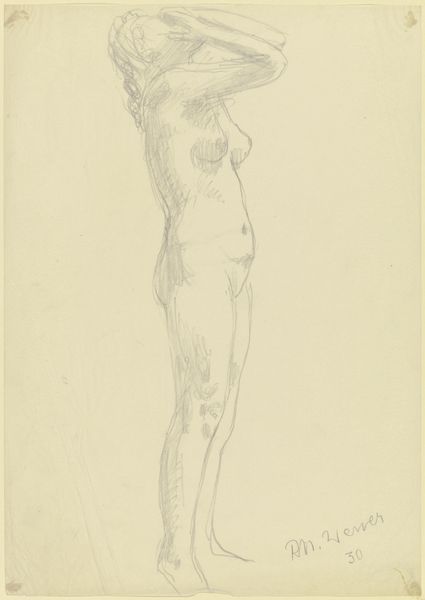
drawing, pencil
#
portrait
#
pencil drawn
#
drawing
#
pencil sketch
#
pencil drawing
#
pencil
#
portrait drawing
#
academic-art
#
nude
#
realism
Dimensions: height 500 mm, width 290 mm
Copyright: Rijks Museum: Open Domain
Curator: Standing before us, we have "Standing Female Nude, Seen From the Back" by Jan Veth, estimated to have been created between 1874 and 1925. It's currently held at the Rijksmuseum. What's your take on this work? Editor: Oh, immediately a sense of vulnerability and quiet contemplation. There's a gentle curve to the spine and the delicate lines suggest a momentary stillness. The scale feels intimate too, like a private study. Curator: Right. Consider that this drawing was created using pencil on paper. The material reality here points to the availability of paper and graphite pencils during the late 19th, early 20th century. Its portability allowed artists to create sketches and studies quickly, which may explain its delicate form. Editor: Yes, and I feel the lack of colour adds to that contemplative mood. If you consider charcoal as a more visceral option, for example, this choice feels gentler, more academic almost, though it's anything but cold. I appreciate how much emotion Veth conveys with simple lines and subtle shading. The way the light suggests form, especially around the shoulders and back, makes the subject almost palpable. It reminds me of longing, as the subject turns away from us. Curator: Precisely! This reflects academic artistic practices prevalent in Europe, where close study and mastery of the human form through drawing were foundational to becoming a skilled artist. The labour invested here highlights traditional art education methods of the time. Editor: There's a universal element to it. Timeless even. The lines are simplified, economical; he manages to capture her essence. Curator: And that’s crucial when considering this artwork within its historical context. It represents how artists engaged with their medium. In a way this method almost democratized artmaking due to its relative cost, leading to mass access. Editor: Hmm, now seeing this with fresh eyes. So while the drawing presents the lone figure on the page, a figure vulnerable perhaps in her nakedness and stillness, it's this understanding of material history and labor behind the work that reveals a more democratic understanding of art as product. Curator: Absolutely. Viewing art from the perspective of labour reveals a fascinating reality often missed. Editor: Indeed, a quiet beauty infused with layered meanings that the artist perhaps didn’t fully foresee.
Comments
No comments
Be the first to comment and join the conversation on the ultimate creative platform.


